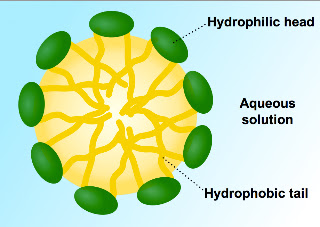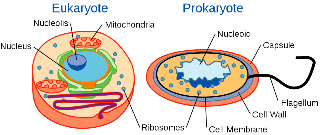 |
| During the Underground Railroad, Vista had no name |
During the Second Underground Railroad of 1977 through 1981, when VA staff secretly developed the original versions of what would later become Vista, they had no name for it. Ted O'Neill and Marty Johnson, two of the fathers of Vista, called it the "field-based systems" to distinguish it from the systems being developed (slowly, expensively, and ultimately futilely) in VA Central Office (VACO). Sometimes they called it the "MUMPS systems" in reference to the programming language it was written in. The "Hardhats" (software engineers) who worked with them often referred to the endeavor as "committing portability," as though it were a crime, which is how VACO treated the doctors, nurses, other medical professionals, and programmers who "dared" to disobey orders from DC by writing their own medical software to solve their problems and improve care for their patients. People were fired, equipment was confiscated and sometimes destroyed, Ted O'Neill was hauled before Congress on fabricated charges, and agents of VACO committed arson at the Washington DC VA Hospital before, in the end, the corrupt Office of Data Management & Technology collapsed in well deserved failure, and the upstart "VA systems" became officially recognized as VA's medical software going forward.
 |
| DHCP name but no logo, 1989-06 |
But the computer industry was innovating rapidly, and the limitations of 80 x 24 character terminals was holding back development of our physician-oriented software, so VA's DHCP developers began working intently on developing graphical user interfaces (GUIs) designed to run on graphical workstations that supported windowing interfaces, like MS Windows, Apple Macintosh, and Unix.
At the same time the DHCP developers were delivering the new windows-based user interfaces (named CPRS for Computerized Patient Record System, a new name for new software in the old DHCP style of initialism), VACO was under intense pressure from Congress, who in turn since 1981 had continued doing their best to represent the interests of commercial EHR vendors by struggling to find some justification for replacing the efficient, effective, homegrown DHCP with more lucrative DOD-style contracts like ODMT&T used to do.
 |
| Roy Baker and new grandson, 2012-07-28 |
So VA held a contest with a $500 reward to name the "new" VA software. the goal was to get some honest-to-goodness branding that carried more emotional appeal than the cryptic DHCP.
Roy Baker, the director of the Dallas Information Systems Center (Dallas ISC, one of the seven VA regional offices [ISCs] responsible for developing DHCP), was at the Washington Vista Hotel (15th and M Streets NW, Washington, DC 20005) attending an ISC directors' meeting, where they were discussing the evolution of DHCP, with special focus on new interfaces, technology, and architecture, so he had those ideas on his mind. During one of the breaks, he played around with making the name of the hotel into an acronym that captured the core ideas of what we were all working to accomplish for veterans, and came up with Veterans Health Information Systems and Technology Architecture. He showed it to Cameron Schlehuber, VA's Database Administrator (DBA), amused by how it came together. Unbeknownst to Roy, Cameron later decided to submit it to the competition, and it won, surprising them both. Roy got his $500 reward, though as he says "I probably still owe Cameron half."
 |
| Cameron Schlehuber in a classic mood, 2015-08-27 |
VACO's strategy worked for a while. The new, much prettier DHCP, named VISTA, got all the credit for DHCP's good qualities, and the older, terminal-interface DHCP took the blame for its shortcomings, real or perceived. The name change plus the new GUIs bought VISTA more life in VA, allowed users and developers for a while to continue improving the software, before politicization, commercialization, and corruption bogged down VISTA development in a quagmire - a subject for another day.
As for the new name, as a new acronym, VISTA would be spelled in allcaps, by the general rules of English capitalization, and for a while it was.
But then some documenters (and I don't know who came up with this innovation) had the idea of trying to create a logo for VISTA, which is not a bad idea. They went with a typographic treatment, to convert the "ist" in the middle to spindly pseudo-smallcaps and italicize them, thus overemphasizing the V and the A (VA? Get it?). Instead of just using it as a logo, though, they then started inserting this special type treatment into the documentation in every place where the name VISTA should have appeared, creating what master typographer disparagingly calls a logogram, a logo masquerading as a word. Since we were all technical people, not editors or typographers, we did not understand how this violated the rules of capitalization in text matter, so we went with it. I confused things further by inventing the "VistA" logogram in a misguided attempt to create a version of the documenters' logogram that could be used in in emails and other contexts that lacked italics or smallcaps. Since I was teaching national classes frequently back in those days, I spread my misinformation far and wide, and VistA eventually replaced the documenters' logogram as the "right" way to capitalize VISTA.
But it wasn't right.
Roy and Cameron had it right to begin with: VISTA.
In text settings with proper typographic tools, smallcaps could be brought to bear to tame the SHOUTING of using allcaps, to help the name blend in better with the surrounding text. Ten years ago, I wrote a set of three blog posts proposing this, and that's how the Vista Expertise Network spelled Vista for the next decade.
But there was always another option, a better option.
If the name VISTA caught on widely enough, then by the same rules that replaced RADAR with radar and LASER with laser, we could replace most of the capitals with lowercase letters, but as a proper noun describing a specific body of medical software, it would always need to retain the capital V. Twenty years later, it's clear Vista has played a decisive historic role in protecting the health and lives of millions of people, as well as being a powerful influence on the development of medical software.
 |
| Ken McGlothlen is pleased with his Choffee, 2013-10-29 |
Since then, we've begun replacing VISTA and VistA and Vista-with-smallcaps with just Vista. In the near future, we're even getting our name officially changed from VISTA Expertise Network to Vista Expertise Network. We're doing the same thing with the name of the programming language Mumps, which was always MUMPS (or M), for the same reasons.
Aside from following the rules of decent capitalization, improving readability and writability, making it easier to typeset, being less precious, standing against the pernicious spread of logograms, deflating the aggressive pompousness of the COLD WAR, and all the other reasons, there is one more interesting reason to spell VISTA as Vista and MUMPS as Mumps: to honor the historical jokes that led to their creation.
You can't thrive in life without a sense of humor. Only the dull or dull-witted think it's more adult to avoid humor. As countless medical dramas - and real-life medical experience - teach us, the seriousness of medical situations can too easily become oppressive over time, so that professionals either begin to break down into addiction and other forms of escape or begin to shut down emotionally and become disengaged from caring about their patients. Successful medical practitioners often address this by honing their sense of humor. Some of the funniest people I know work in lab departments, pharmacies, cancer wards, and other places where the seriousness of their endeavor must be balanced by the cultivation of their own humanity. The same is true of medical software developers, whose every software bug is a potential hazard to some patient, and yet who work at levels of complexity at which mistakes are inevitable. You have to be able to keep laughing to stay sane and to stay focused.
 |
| Octo Barnett, whose pun changed the world |
As the founder and former Senior Scientific Director of the Laboratory of Computer Science at Massachusetts General Hospital, Octo oversaw and guided the work of the three men who more directly created Mumps originally (Bob Greenes, Kurt Marbles, and Neil Papallardo). When it came time to name this new medical programming language he and his team had invented, like many medical and medical-software professionals, he began with humor.
In 1966/67, how can you name a medical computer language and get its point across? You could name it after a disease, but that would be gross. For example, you could name it Mumps. Let's see: Massachusetts General Hospital Utility Multi-Programming Systems.
Years later, ruefully, Octo said if he'd had any idea that damn pun would take on such a life of its own, he never would have suggested it, but the humor is not a flaw. Fifty years later, it preserves the spirit in which it was created - humane, at once going about something serious while remembering to laugh at ourselves along the way.
It's the same mood Roy was in thirty years later, during a short break from the serious business of guiding DHCP's evolution, when he started with the name of the hotel they were meeting at and tried to work backwards, for fun, to fit the ideas behind our serious work into an attractive name for absurd reasons.
Since then, VACO has tried numerous times to pull the same DHCP-to-Vista renaming and scapegoating trick that worked in the mid-1990s, but we won't let them, because Vista is the name we needed. We don't need any more. Multiple renaming just causes confusion, making it hard to talk about the continuity and development of this great work over the decades. We are not interested in bureaucratic obfuscation but in clarity. It's time to talk clearly about what we did and how it has changed the world, to help educate a new generation of caregivers, developers, managers, policymakers, and lawmakers. Vista needs some Sonny Montgomery of the new generation to learn what this is all about, to stand against the endless wasteful replacement efforts, to support VA staff in returning to the business they know so well and have proven themselves so capable of - meeting their own medical-software needs themselves, to improve their ability to care for their patients.
So, seriously, the names are Vista and Mumps. No need for trickery in the capitalization or spelling. There's enough healthy playfulness in the origins of the names to balance out the serious business we are engaged in - improving health and saving lives.
Related Posts:
2007-04-28: VISTA, discusses why we use the name Vista when there are so many competing alternatives out there. (https://vistaexpertise.blogspot.com/2007/04/vista.html)
2007-05-07: Capital Confusion, discusses how the capitalization VistA came about and how we preferred to solve the problem (https://vistaexpertise.blogspot.com/2007/05/capital-confusion.html)
2009-06-03: Small-capital Confusion, discusses the history of small caps and its implications






















